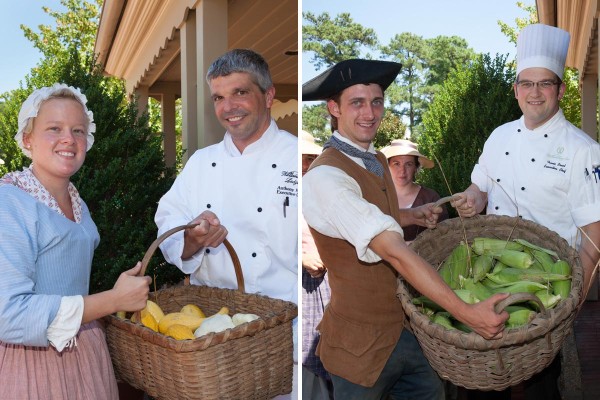 One day earlier this summer, journeyman farmer Ed Schultz escaped for a spell from Great Hopes Plantation for a nice lunch with his parents at the Williamsburg Lodge. The conversation turned to what they were growing at Great Hopes: a crop of heirloom vegetables to go along with the fields of tobacco, corn, and cotton.
One day earlier this summer, journeyman farmer Ed Schultz escaped for a spell from Great Hopes Plantation for a nice lunch with his parents at the Williamsburg Lodge. The conversation turned to what they were growing at Great Hopes: a crop of heirloom vegetables to go along with the fields of tobacco, corn, and cotton.
 A plan was hatched. They would deliver a modest load of home-grown treats for the Lodge’s kitchen. Let the chefs find some creative way to use the produce, and have some fun in the process.
A plan was hatched. They would deliver a modest load of home-grown treats for the Lodge’s kitchen. Let the chefs find some creative way to use the produce, and have some fun in the process.
Days later, Pat and Mike hauled a delivery of fresh-picked vegetables across town by cart, from the 18th century farm to Williamsburg’s modern hotel.
The oxen, joined by half a dozen farmers, zigzagged through town, finally crossing Francis St. and turning right at the Williamsburg Inn before arriving at their South England St. destination.
Heeding the commands of their driver, Pat and Mike backed in—with unexpected grace—near the doors of the Lodge, where Colonial Williamsburg’s chefs were on hand to greet the time travelers.
 Chef Travis and Chef Anthony carried the two baskets filled with green corn, yellow squash, and patty pan squash down to the kitchen. It wasn’t a huge load by any means, but it was a fine use for a little extra farm produce.
Chef Travis and Chef Anthony carried the two baskets filled with green corn, yellow squash, and patty pan squash down to the kitchen. It wasn’t a huge load by any means, but it was a fine use for a little extra farm produce.
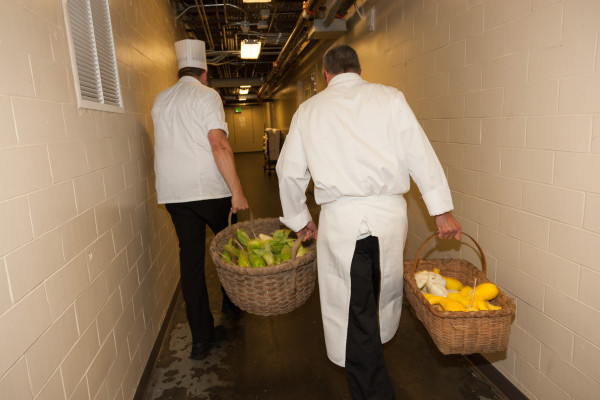 The chefs offered their Great Hopes colleagues a tour of their modern kitchen before they headed back.
The chefs offered their Great Hopes colleagues a tour of their modern kitchen before they headed back.
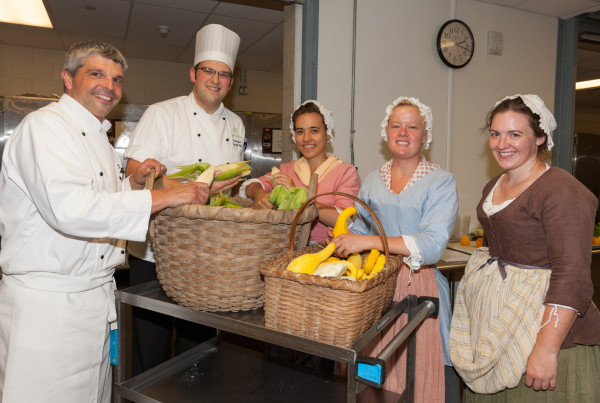 And the next day, they sent word about how Chef Sean Gonzalez used the vegetables from the farm for Saturday dinner in Traditions Restaurant. The daily special, grilled swordfish and shrimp with a citrus butter sauce, was paired with a “Great Hopes Succotash,” which incorporated farm’s fresh veggies.
And the next day, they sent word about how Chef Sean Gonzalez used the vegetables from the farm for Saturday dinner in Traditions Restaurant. The daily special, grilled swordfish and shrimp with a citrus butter sauce, was paired with a “Great Hopes Succotash,” which incorporated farm’s fresh veggies.
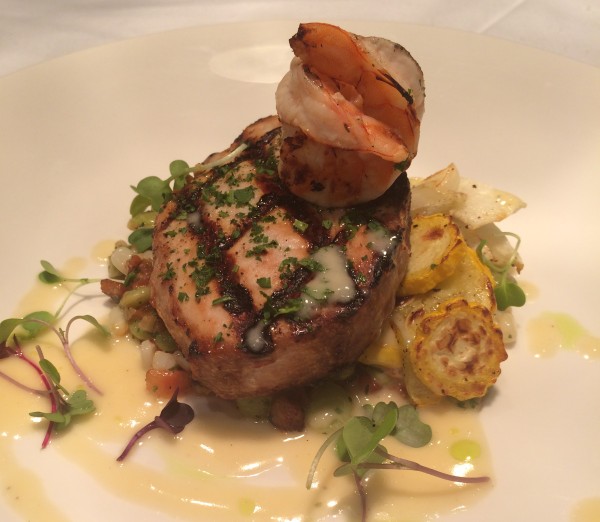 Everyone was excited to successfully bring the produce from the Great Hopes garden to the Williamsburg Lodge’s tables. Future deliveries are planned, but it will be based on 18th-century availability and timing.
Everyone was excited to successfully bring the produce from the Great Hopes garden to the Williamsburg Lodge’s tables. Future deliveries are planned, but it will be based on 18th-century availability and timing.
But let’s back up a minute. Just what are they up to at Great Hopes that led to this unusual delivery?
The site interpretation at the farm is in the process of being reimagined. Robertson’s Windmill is being installed and, and Historic Farming as a trade has a renewed emphasis. That means using hand tools to work the land, and increasing the presence of the domestic arts, too.
The kitchen garden on the farm occupies only perhaps one-tenth of an acre or so. It is symbolic in its size. Farms in the 1700s typically required at least a couple acres of produce to adequately feed the family and its labor force.
“This is the heart of rural home life,” says Stefanie Dunn, who is spearheading research on what was “women’s work” in the 18th century. “Nothing happens without this kitchen garden.”
The produce from the main garden provided the essential subsistence for the family, making it possible to raise the larger crops to sell in the market. And, as Stefanie points out, the garden included many herbs which weren’t just for seasoning the food. They were often used for medicinal cures. Mom was also the main family doctor.
Right now, they’re growing squash, pumpkins, sweet potatoes, and beans, and they’re clearing an area for a late-season round of collards and other greens.
Everything that is produced is used. Ed says he and others sometimes start the morning by just grabbing an ear of corn off a nearby stalk and taking a bite. No cooking, no salt. Ed describes the flavor as less sweet, more mealy than most of today’s corn on the cob.
Like everyone associated with the Historic Area, working on the farm involves research. For Stefanie, this includes experimenting with growing techniques. How will squash grow if we do it this way? What will get rid of these bugs?
It also means exploring traditional food preservation and old recipes. As Stefanie says, sometimes it works, sometimes it… doesn’t. “We followed one recipe that said to take sliced cucumbers and put them in saltwater overnight.” It didn’t say anything about rinsing the salt off. Several burned tongues later, lesson learned. “Sometimes they leave things out.”
Stefanie looks hard for contemporary recipes to better understand how food was prepared back then. Her standbys include a Hannah Glass cookbook from the 1740s. But Glass was English, so she didn’t tend to use American staples like corn and squash. Another favorite is Amelia Simmons. whose 1796 volume was the first truly American cookbook.
The first regional cookbook, The Virginia Housewife, came from Mary Randolph, a relative of the Williamsburg Randolphs as well as Thomas Jefferson. She was born about 50 miles west of Williamsburg. Below is a simple recipe for preparing squash taken from that 1824 cookbook. Try it at home, and don’t forget to stop in and see what’s happening at Great Hopes Plantation when you’re in town.
- 4 Squash
- 1 cup cream
- Tbsp butter
- Salt and pepper (to taste)
- Gather young squash, peel, and cut them in two.
- Take out the seeds, and boil them till tender.
- Put them into a colander, drain off the water, and rub them with a wooden spoon through the colander.
- Put them into a stew pan, with a cup full of cream, a small piece of butter, some pepper and salt.
- Stew them, stirring frequently until dry. This is the most delicate way of preparing squash.
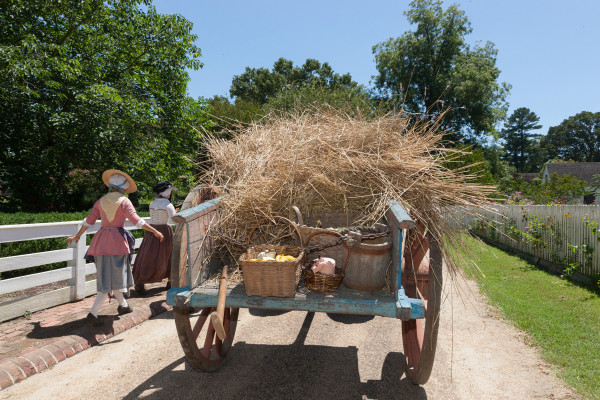
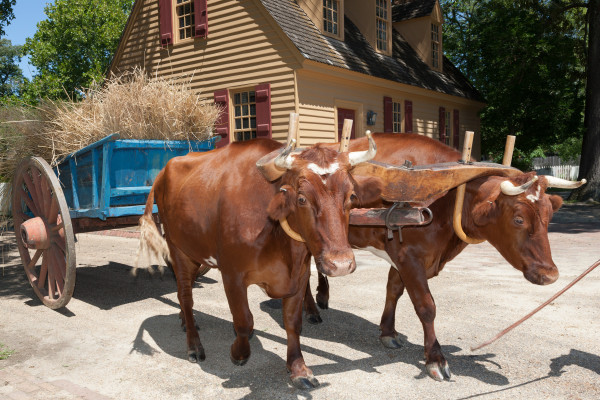
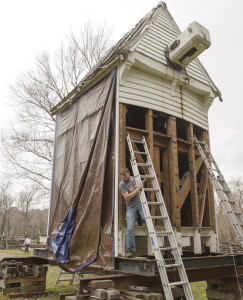
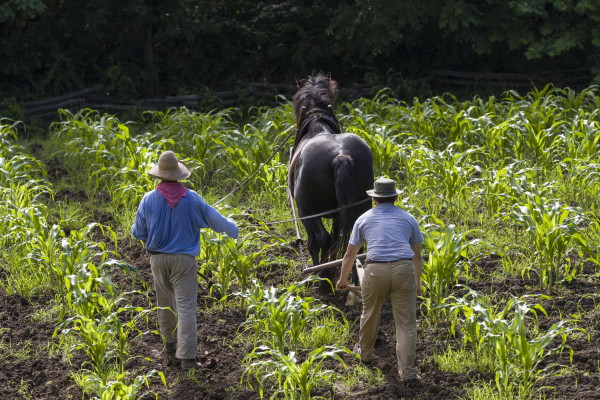
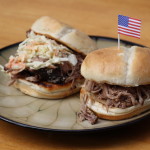
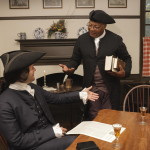

[…] produce grown at Great Hopes is also delivered to Colonial Williamsburg’s restaurants, where it’s used in recipes created by our talented chefs. And it’s delivered by ox […]